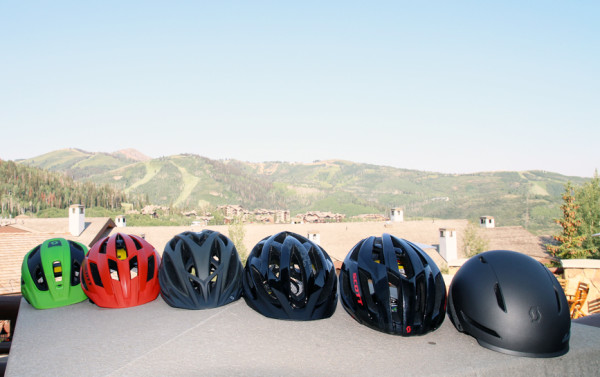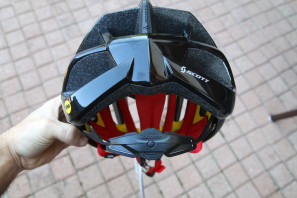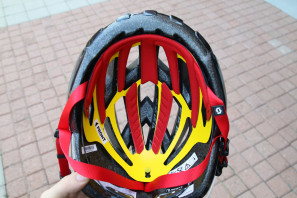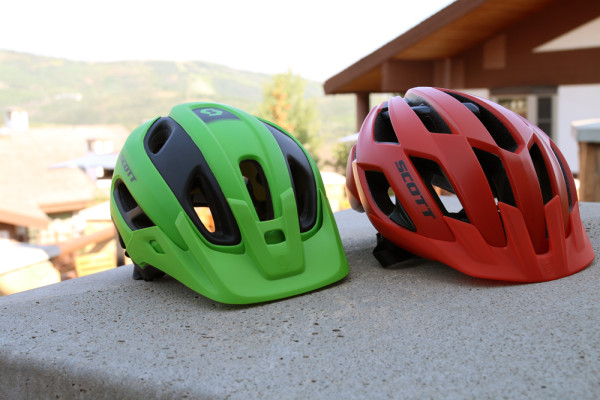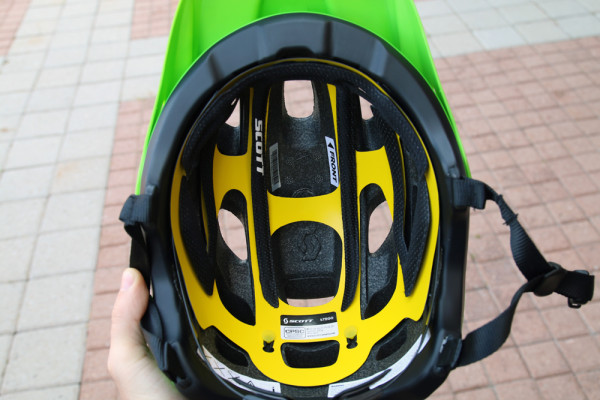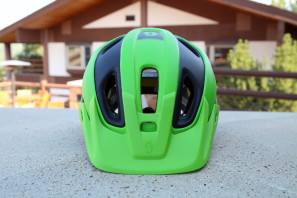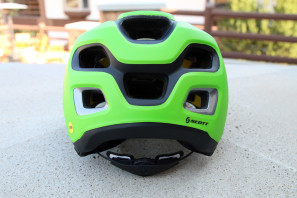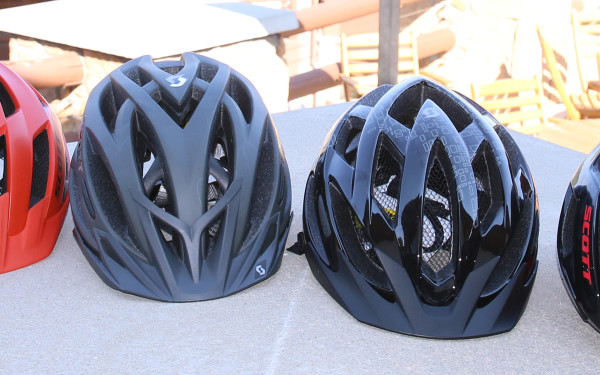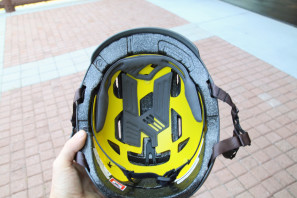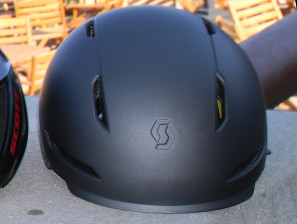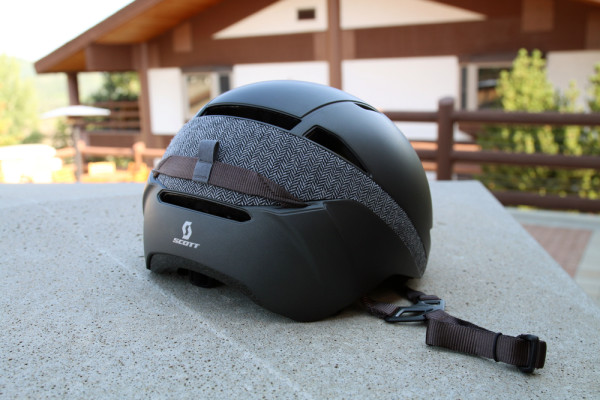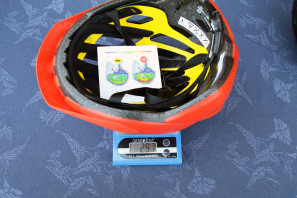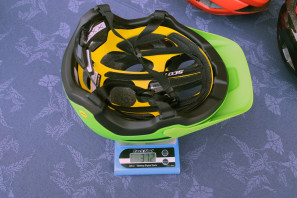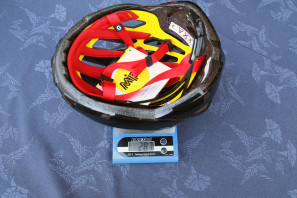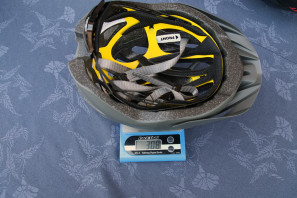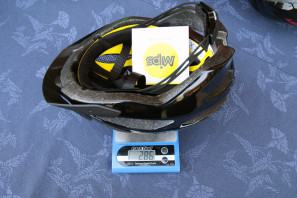Elevate your safety. That’s Scott Sport’s motto when it comes to helmets for the 2015 model year. In addition to a number of common design goals for their helmets to optimize impact protection, Scott is investing heavily in MIPS (Multi directional Impact Protection System) Brain Protection with 6 different models that include the special yellow liner. Primarily geared towards mountain biking, Scott also offers an urban MIPS helmet along with what they believe is the first road helmet to bring MIPS to riders who prefer skinny tires.
Utilizing a low friction layer that is built into the helmet, MIPS is said to prevent serious brain injuries by reducing the force of angled impacts to the head. Working with Biokinetics in Canada as an independent test facility, Scott recorded anywhere from a 9-34% reduction of impact forces when comparing identical helmets, MIPS and non-MIPS. In the event of an impact, the low friction layer works within 15 milliseconds and moves less than 15mm. It’s this sliding of the low friction layer that reduces the amount of force delivered to your brain in the event of an angled impact.
In 2015, Scott has expanded their MIPS line to include 6 different models including the all new ARX Plus road helmet. While increased options for MIPS is the big story, Scott has also made a few improvements to other helmets including updated fit systems with better adjustment.
Read on for more on MIPS, plus actual weights…
Scott claims their ARX Plus is the first road helmet to include the MIPS system, but looking at the MIPS website it looks like other companies aren’t far behind (according to the site both Lazer and TEC will have MIPS road helmets soon). Available in the road oriented ARX Plus or ARX MTB Plus, both helmets are designed to offer excellent ventilation with the added protection of MIPS. New for 2015, the updated MRAS II fit system has double the adjustment going from 16 to 32 clicks.
If higher speeds and the risk for bigger impacts are involved, Scott offers the Stego. Claiming that the Stego is the safest helmet they’ve ever produced the lid offers increased coverage with smoother surfaces in critical areas. This should mean that the helmet has less chance of “hanging up” when impacting the ground.
In spite of the added material, the Stego is supposed to offer excellent ventilation thanks to the large intake and exhaust vents. Like the ARX Plus, Stego uses the updated MRAS II adjustment system with 3 vertical positions.
Scott also continues with the Lin and Taal mountain bike helmets which offer MIPS at lower price points. The Lin is a trail oriented helmet with 3 shell sizes, while the Taal moves to a one size fits all shell.
If your rides are primarily in an urban setting, you can still take advantage of MIPS with the Torus Plus. The helmet uses a tough but ventilated ABS hard shell with EPS liner and is designed for an easy fit with their LW fit system.
On our scale, all of the helmets are very close to their claimed weights. Since these were directly off the show floor we couldn’t remove the MIPS hang tag that was attached to the helmets on the left, so just subtract 13g from the total weight. At 274g, the ARX Plus road helmet manages to keep a fairly light weight even with the addition of MIPS.
